Technology
301 views
The video below is interesting as a peek into the way that YouTube works, but it's also interesting as a YouTube curiosity because its view counter is permanently stuck at 301, and has been for 11 years now, even though its actual view count is probably well over 1 million. Someone at YouTube had to deliberately freeze its view counter. As far as I know, it's the only video on YouTube that's received special treatment in this way.
Posted By: Alex - Fri Dec 08, 2023 -
Comments (1)
Category: Technology, Internet, Video
The First Woman to Marry a Hologram
Back in 2018 we posted about Akihiko Kondo, a Japanese man who married a hologram. His holographic wife floated inside a desktop device.Now Spanish artist Alicia Framis has announced she'll also be marrying a hologram. Her holographic partner is a life-size, three-dimensional projection powered by AI. His name is AILex.
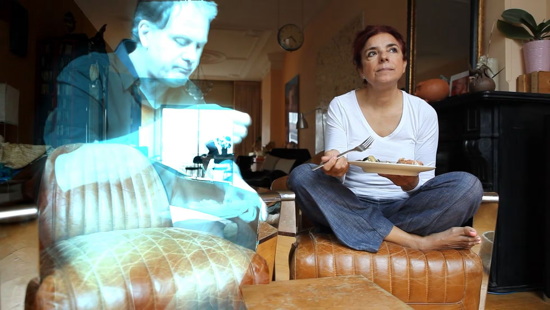
Whereas Akihiko Kondo married a hologram because, by his own admission, he had trouble forming relationships with flesh-and-blood women, Framis is marrying a hologram as a piece of performance art which she's titled "The First Woman to Marry a Hologram."
She previously lived with a mannequin named Pierre.
More info: ElPais.com, AliciaFramis.com
Posted By: Alex - Thu Dec 07, 2023 -
Comments (0)
Category: Technology, AI, Robots and Other Automatons, Performance Art, Marriage
Electrical Stimulation Face Mask
Full patent here.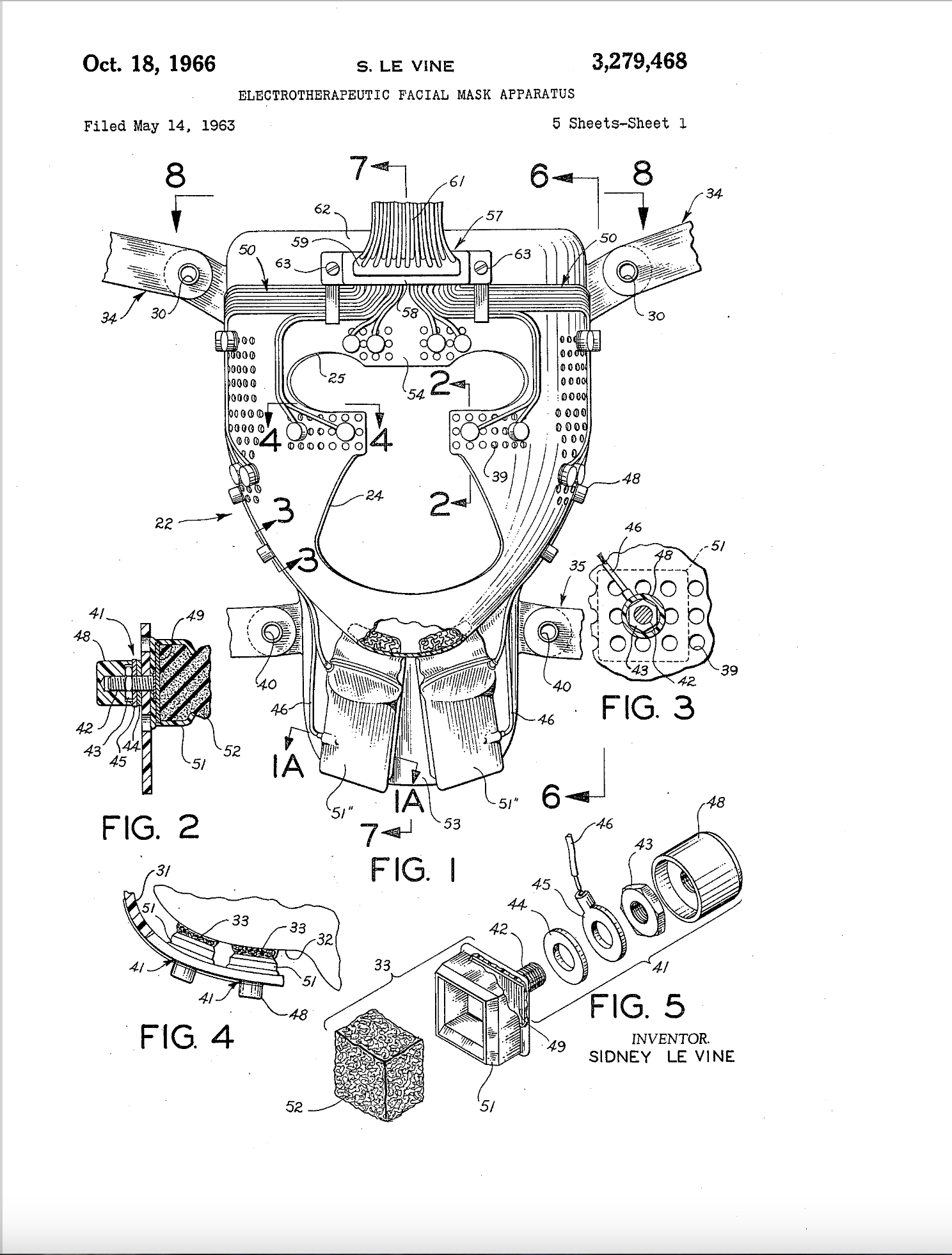
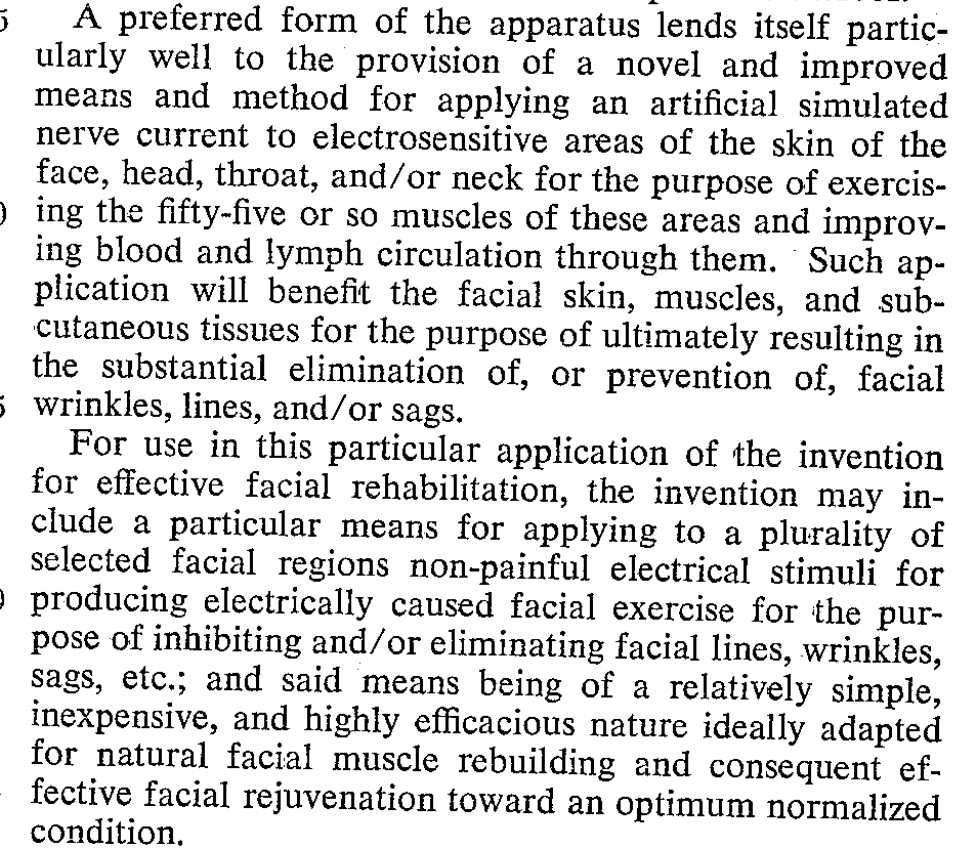
Posted By: Paul - Wed Dec 06, 2023 -
Comments (0)
Category: Frauds, Cons and Scams, Technology, Patent Medicines, Nostrums and Snake Oil, 1960s, Face and Facial Expressions
Dial Comes to Town
Posted By: Paul - Thu Nov 30, 2023 -
Comments (0)
Category: Family, PSA’s, Technology, Telephones, 1940s
A system for climbing vertical surfaces
The French patent office granted Raymond Saulnier a patent in 1951 for "a system for climbing vertical surfaces." A British patent followed in 1952.Saulnier had come up with a way to allow vehicles, or even people, to climb vertical surfaces without the aid of ropes. His insight was that climbing any slope is essentially a problem of adhesion. If a force stronger than gravity is pushing you against the slope, then you won't slide down. And that adhesive force could be supplied by the downward pressure of propellors or jet nozzles.
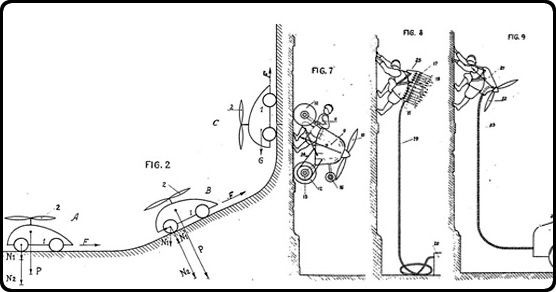
Of course, powering propellors or jet nozzles requires a lot of energy. So Saulnier imagined powering them with compressed air supplied by a tube from the ground. He suggested that firefighters, among others, might find his system useful for scaling the sides of buildings.
I've never seen a prototype of Saulnier's invention in action. But when I was in Target the other day, I noticed a Sharper Image-branded toy named the "Gravity Rover" that "climbs from floor to wall to ceiling." It occurred to me that this was Saulnier's invention transformed into a toy.
It's a pretty cool toy, but based on videos of it, extremely loud.
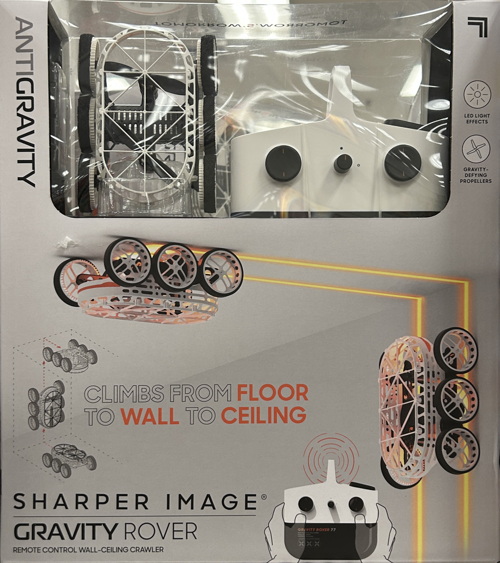
Posted By: Alex - Sun Nov 26, 2023 -
Comments (0)
Category: Technology, Toys, Patents
The Honeywell Kitchen Computer
In 1969, Neiman Marcus offered a Honeywell "kitchen computer" in its Christmas catalog. The price tag was $10,600, which is equivalent to about $80,000 today. The price included a two-week course in programming, which was required to know how to use the computer. The computer could supposedly store recipes and help housewives plan meals.No one ever bought one. Or rather, no one ever bought the "kitchen computer," but a few people (engineers, and the like) did buy the H316 minicomputer, which is what the kitchen computer really was. Neiman Marcus and Honeywell had simply repackaged the H316 as a kitchen computer.
Nevertheless, the "kitchen computer" is now credited as being the very first time a company had offered a home computer for sale. One of them is on display at the Computer History Museum.
More info: wikipedia
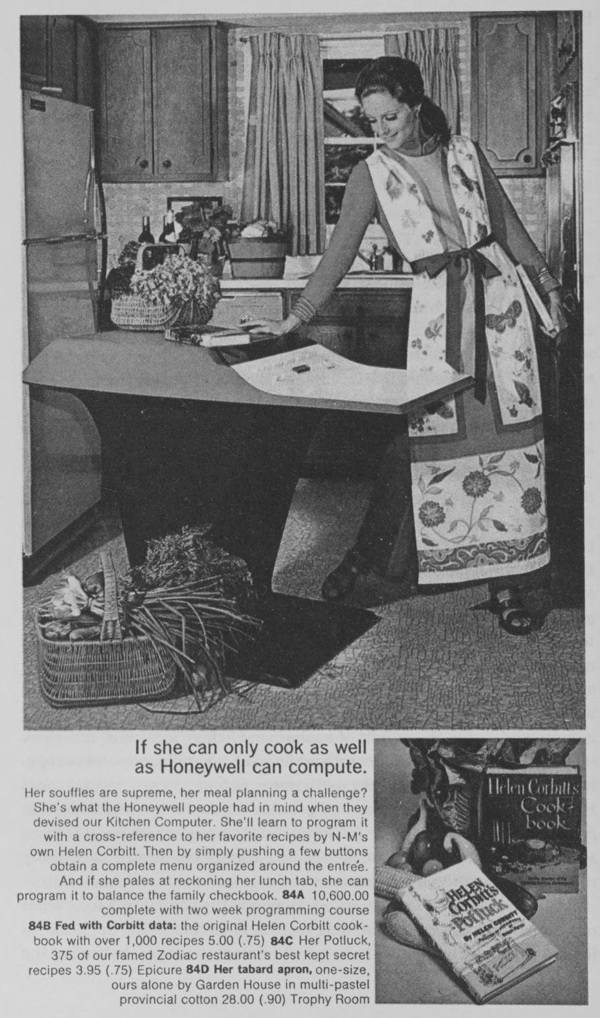
image source: Divining a Digital Future, by Paul Dourish and Genevieve Bell
If someone had bought one of the kitchen computers, it would have been pretty much unusable, because a user had to communicate with it in binary code, using a series of 16 buttons on the front to enter data. From Wired:

image source: The Computer, by Mark Frauenfelder
Posted By: Alex - Wed Nov 22, 2023 -
Comments (5)
Category: Technology, Computers, 1960s
Miss Electronics of 1950 and Miss Microwave
The Institute of Radio Engineers chose 19-year-old Toy Palaske to be "Miss Electronics of 1950." She got to wear a swimsuit covered with electronics symbols and a crown topped with a television antenna.A few papers reported a different title for her, "Miss Microwave of 1950".
I assume she was both simultaneously.
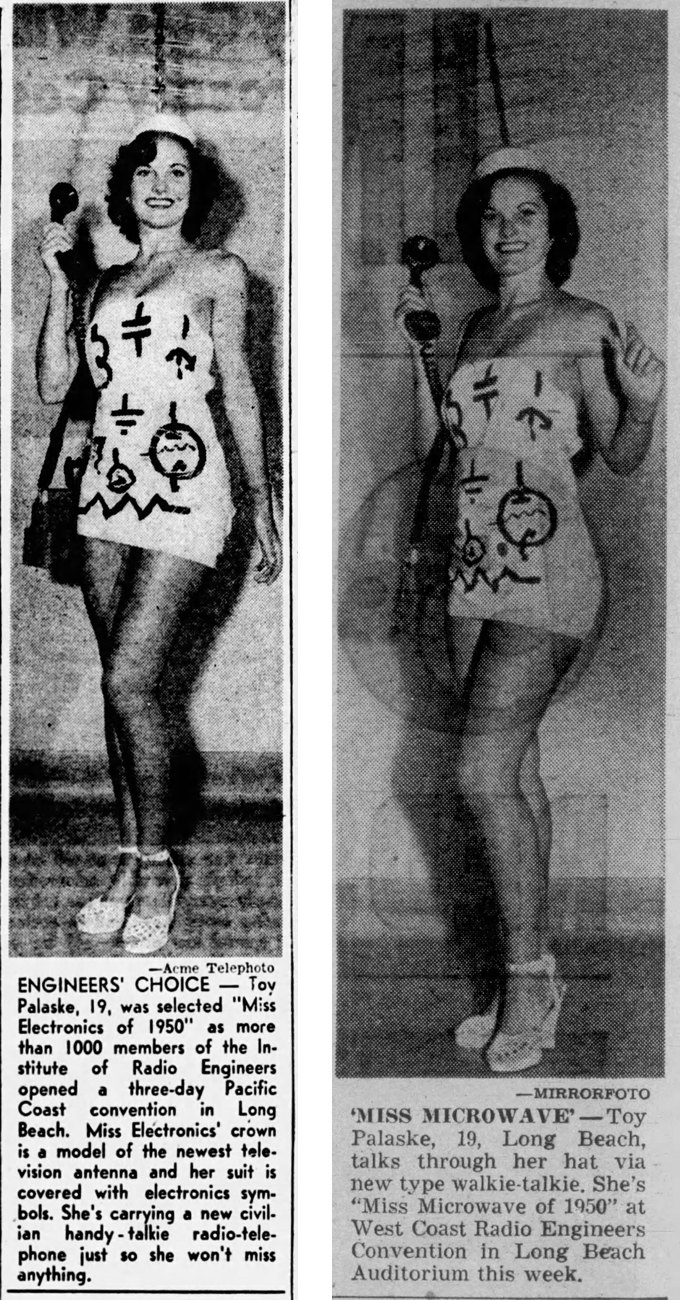
(left) Pasadena Independent - Sep 15, 1950; (right) Los Angeles Mirror - Sep 14, 1950
Posted By: Alex - Tue Nov 07, 2023 -
Comments (0)
Category: Awards, Prizes, Competitions and Contests, Technology, 1950s
Recc Queens: 1957-1991
What does RECC stand for? "Rural Electric Cooperative Corporation." Bringing electricity to the sticks.Read a short history here.
And what would any self-respecting organization be without crowning a queen? The photos here start in 1957 and go to 1991.
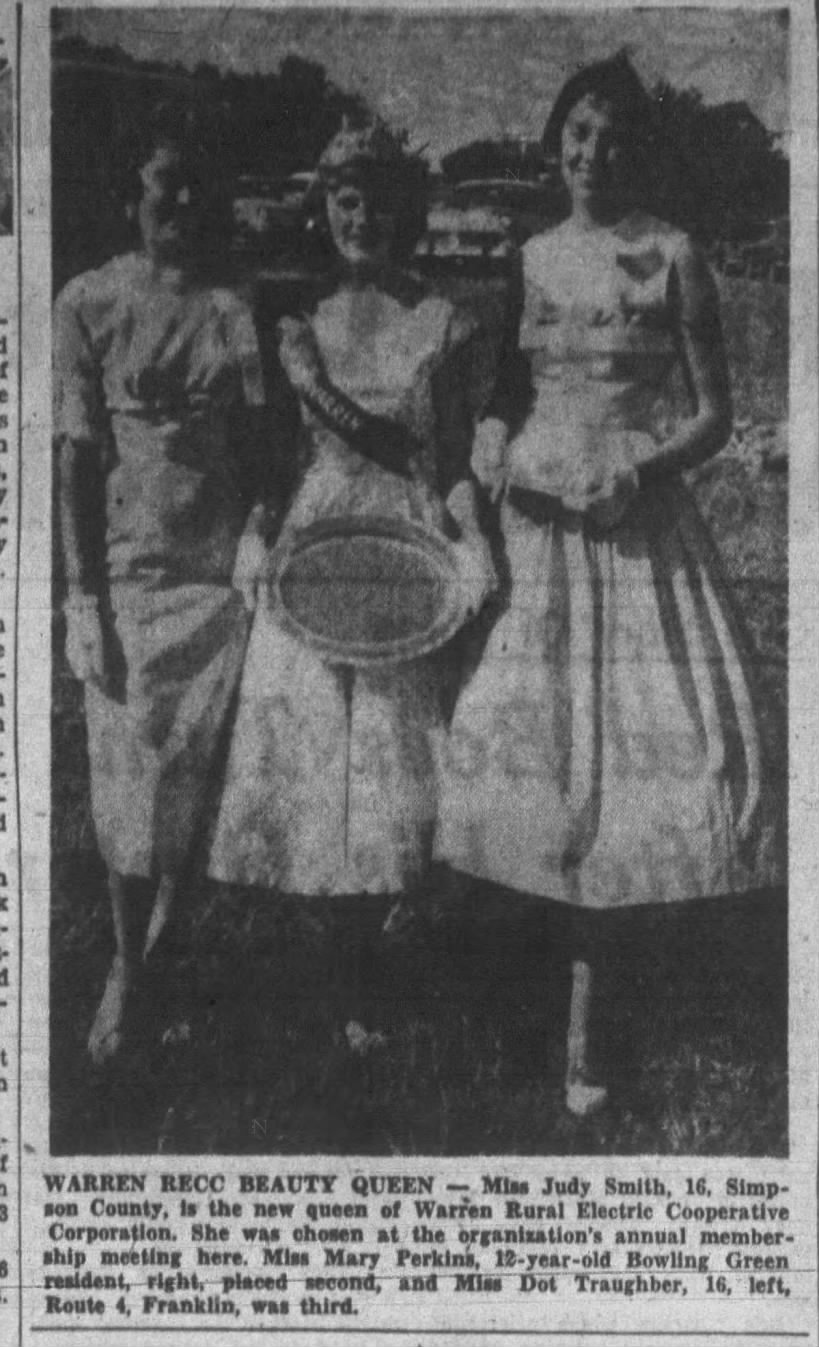
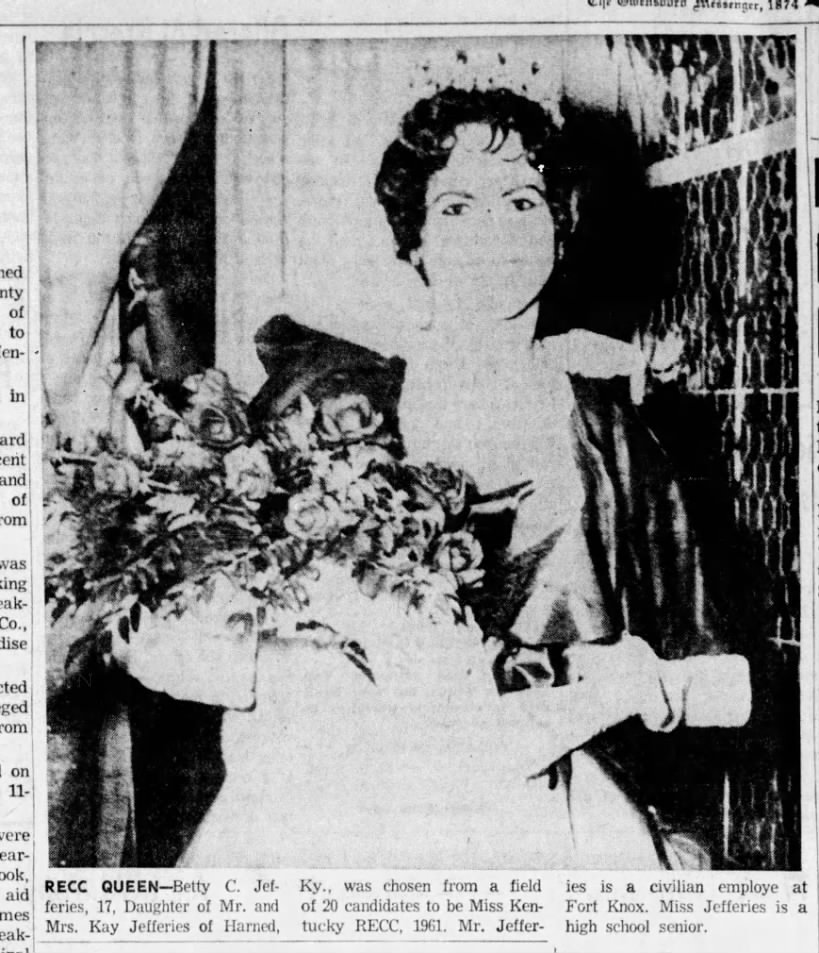
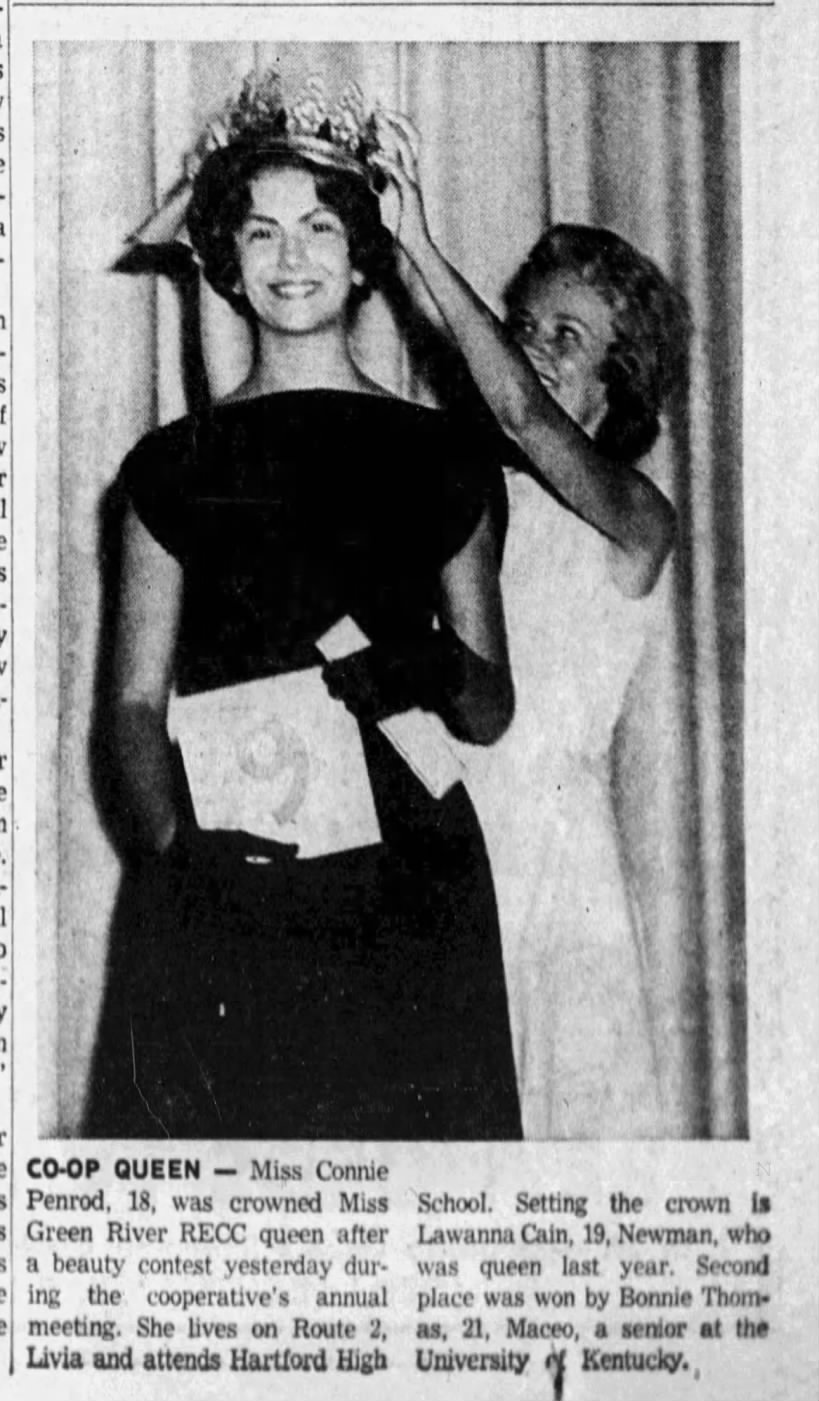

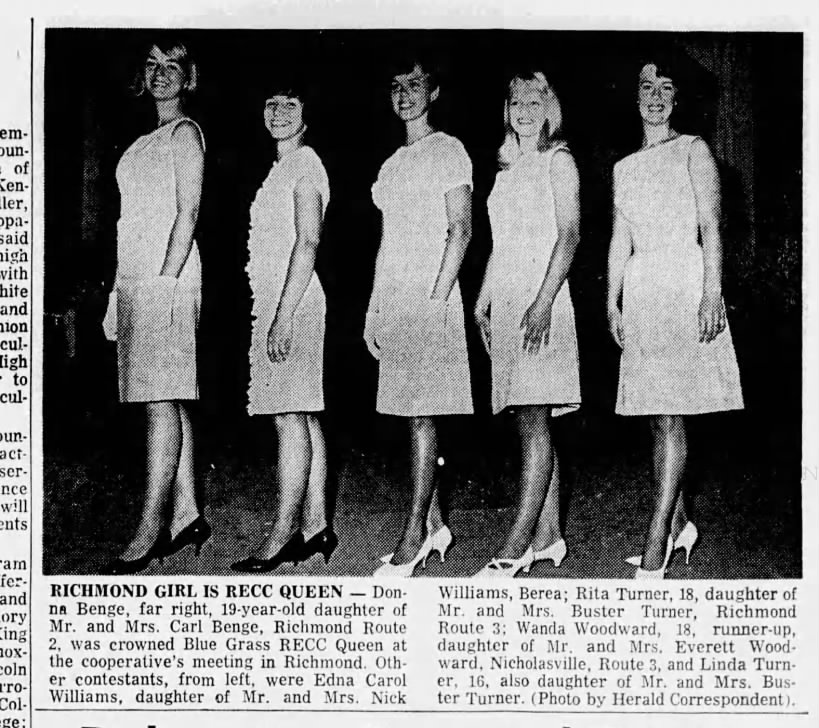
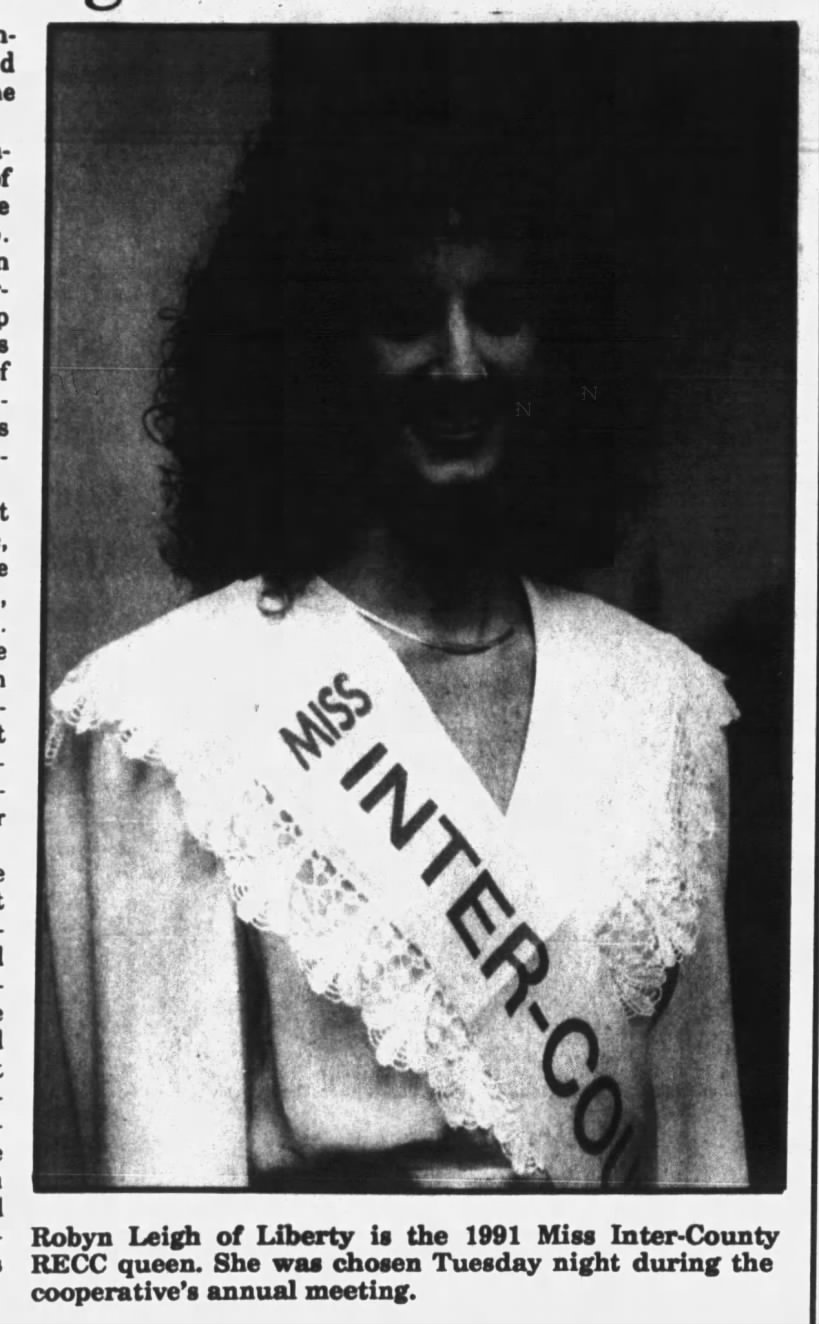
Posted By: Paul - Fri Oct 27, 2023 -
Comments (0)
Category: Awards, Prizes, Competitions and Contests, Beauty, Ugliness and Other Aesthetic Issues, Hillbillies, Country Bumpkins, Ruralism and Flyover Country, Technology, Twentieth Century
Project Primrose
As a follow-up to Paul's recent post about the electric clothing of Diana Dew (from 1967)... here's a present-day electric dress recently unveiled by Adobe.
Posted By: Alex - Tue Oct 17, 2023 -
Comments (0)
Category: Fashion, Technology, 2020s
The Electric Clothing of Diana Dew
According to Lobenthal, Dew was an electrical engineer who flaunted a different hair color every day and created a miniature battery pack that attached to the belt of a dress to create blinking hearts and stars. “They’re hyperdelic transsensory experiences,” she said of her garments to Time Magazine in 1967, the same year The New Yorker wrote about her. (If your wired mini breaks down, “Please just take it to the nearest radio-TV repair shop,” Dew said.) Lobenthal writes that Dew’s tiny power source was eventually acquired by the U.S. military.
Her Wikipedia page.
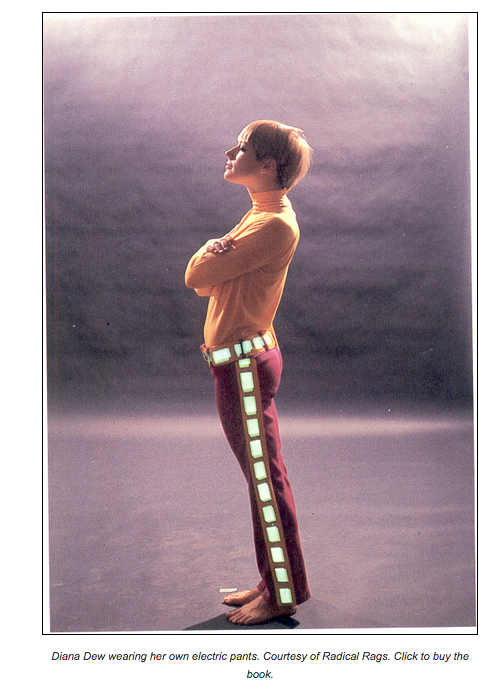
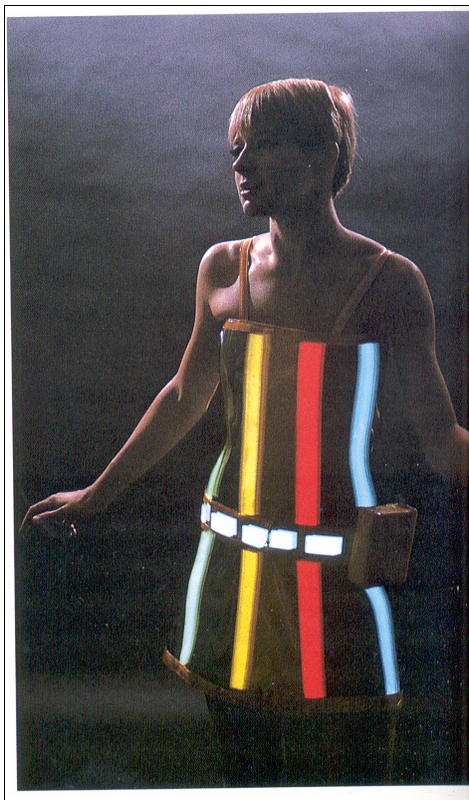
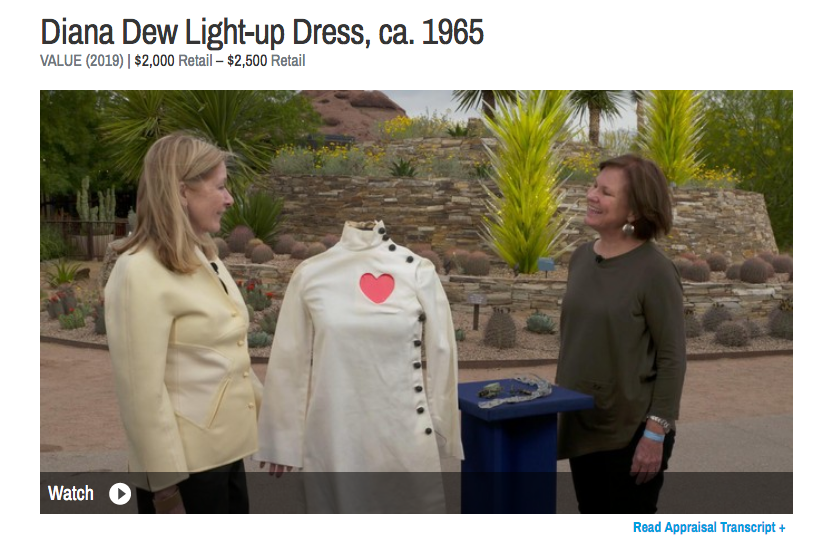
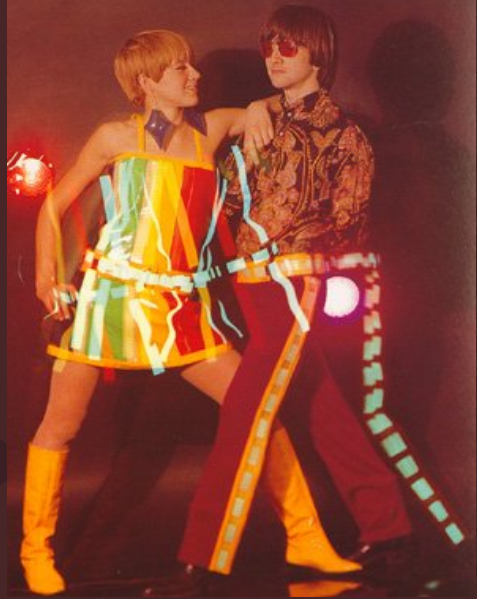
Posted By: Paul - Sat Oct 14, 2023 -
Comments (1)
Category: Fashion, Technology, 1960s

| Who We Are |
|---|
| Alex Boese Alex is the creator and curator of the Museum of Hoaxes. He's also the author of various weird, non-fiction, science-themed books such as Elephants on Acid and Psychedelic Apes. Paul Di Filippo Paul has been paid to put weird ideas into fictional form for over thirty years, in his career as a noted science fiction writer. He has recently begun blogging on many curious topics with three fellow writers at The Inferior 4+1. Contact Us |




